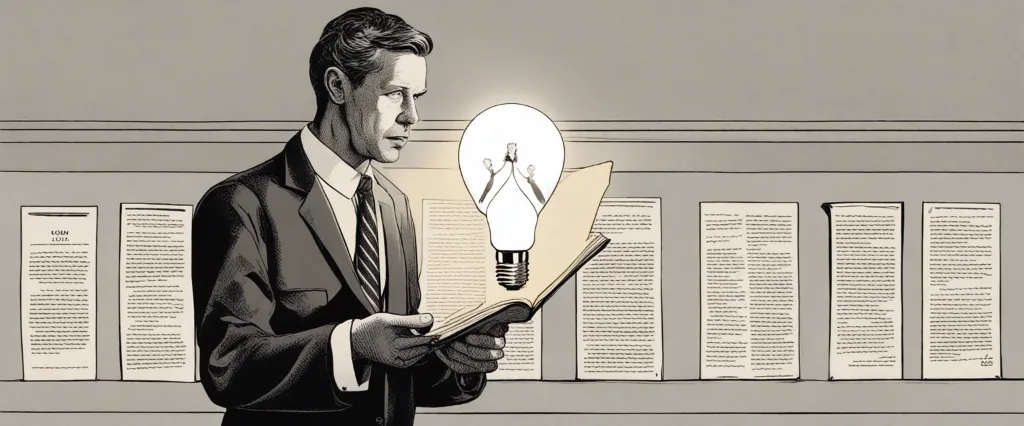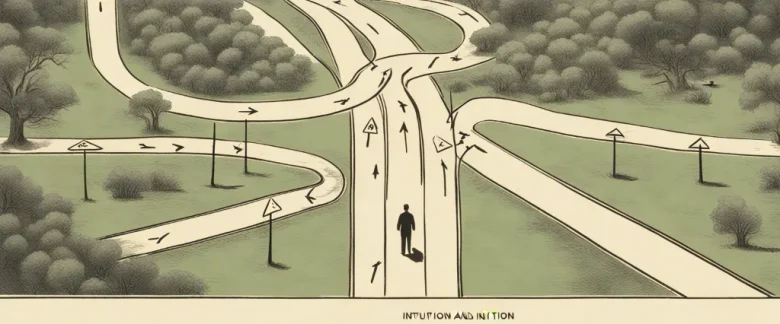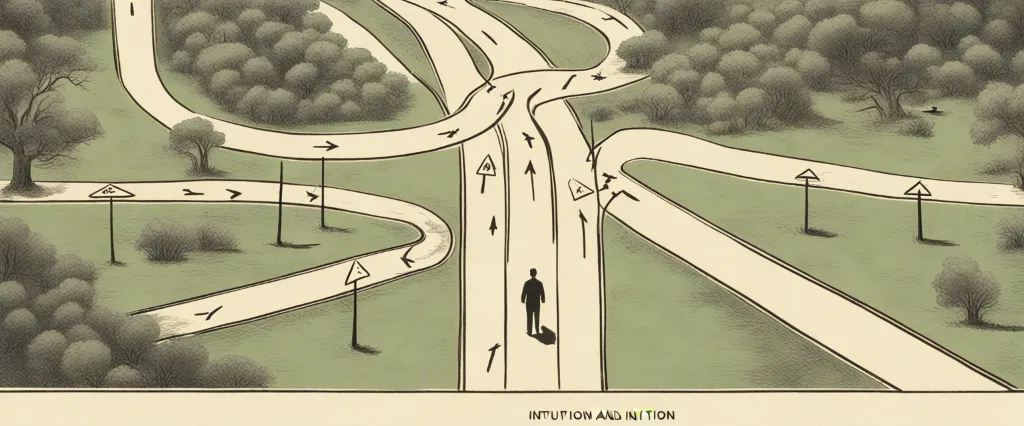In Zero Limits by Joe Vitale renowned author and self-help expert Joe Vitale guides readers on a transformative journey of inner healing and personal growth. Drawing inspiration from the ancient Hawaiian practice of Ho’oponopono, Vitale presents a powerful method to release limiting beliefs, achieve authentic happiness, and attract abundance into our lives. With his profound understanding of human psychology and spirituality, Joe Vitale empowers individuals to let go of the past, transcend self-imposed limitations, and embrace a state of zero limits where infinite possibilities unfold. This summary will delve into the key concepts and practices outlined by the author, providing valuable tools to ignite personal transformation and create a life of limitless potential.
Chapter 1: Discovering the power of the subconscious mind
Chapter 1 of the book “Zero Limits” by Joe Vitale is titled “Discovering the Power of the Subconscious Mind” and explores the concept of the subconscious mind and its influence on our thoughts, beliefs, and actions.
Vitale begins by sharing his personal experience of meeting Dr. Ihaleakala Hew Len, a Hawaiian therapist who famously used the ancient practice of Ho’oponopono to heal an entire ward of mentally ill criminals without meeting them individually. This extraordinary feat astounded Vitale and led him on a journey to understand the power of the subconscious mind.
The chapter delves into the nature of the subconscious mind, which Vitale describes as living in an unseen realm beyond conscious awareness. He explains that our subconscious programming, often formed from childhood experiences, shapes our beliefs, emotions, perceptions, and behaviors, ultimately influencing the outcomes we manifest in our lives.
Vitale emphasizes that by awakening to the power of the subconscious mind, we can begin to take control of our lives and create positive changes. He introduces the concept of “zero limits,” which refers to transcending limitations imposed by negative thoughts and beliefs, enabling us to tap into our inherent potential.
The chapter highlights various techniques to begin harnessing the power of the subconscious mind. One of these techniques involves taking full responsibility for our experiences, including our negative thoughts and emotions, and using Ho’oponopono to gain clarity, release negativity, and create a state of zero limits. Ho’oponopono involves repeating four simple phrases: “I’m sorry. Please forgive me. Thank you. I love you.”
In conclusion, Chapter 1 of “Zero Limits” introduces the power of the subconscious mind and its ability to shape our reality. It emphasizes the importance of taking responsibility for our thoughts and beliefs and introduces the practice of Ho’oponopono as a tool for healing, transformation, and achieving zero limits.
Chapter 2: Letting go of limiting beliefs and self-imposed limitations
Chapter 2 of “Zero Limits” by Joe Vitale focuses on the importance of letting go of limiting beliefs and self-imposed limitations in order to achieve true freedom and abundance. The chapter begins with Vitale sharing his own personal experience of feeling trapped by negative beliefs and how he discovered the ancient Hawaiian practice of Ho’oponopono.
Ho’oponopono is based on the idea that we are responsible for everything in our reality, and by taking responsibility, we have the power to change it. The practice involves repeating four simple phrases: “I’m sorry, please forgive me, thank you, I love you.” These phrases are repeated as a way to cleanse negative beliefs and memories, ultimately leading to freedom from self-imposed limitations.
Vitale discusses the three main self-imposed limitations: memories replaying in our minds, current problems we face, and future expectations. He explains how these limitations hold us back from experiencing true abundance and how Ho’oponopono can help release them. By repeating the practice’s phrases, one can address and clear the memories, problems, and expectations that create these limiting beliefs.
Throughout the chapter, Vitale shares real-life anecdotes and stories of individuals who have experienced profound transformations through Ho’oponopono. He emphasizes that letting go of limiting beliefs requires a willingness to take personal responsibility and surrender to a higher power.
In summary, Chapter 2 of “Zero Limits” teaches us that freeing ourselves from limiting beliefs and self-imposed limitations is crucial for achieving abundance and fulfillment. The practice of Ho’oponopono offers a simple yet powerful tool to release these limitations and create a life of unlimited possibilities.
Chapter 3: Embracing the concept of “Zero Limits” and infinite possibilities
Chapter 3 of the book “Zero Limits” by Joe Vitale explores the concept of “Zero Limits” and how embracing this mindset can open infinite possibilities in our lives. The chapter begins by delving into the idea that our perceptions and beliefs shape our reality, and often restrict us from reaching our full potential.
Vitale introduces the “Zero Limits” state of mind, which is about letting go of all limitations and connecting with the divine. He shares his personal experience with Ho’oponopono, a Hawaiian healing method, and how it transformed his life. Ho’oponopono involves taking full responsibility for everything in our lives, recognizing that we have created our current circumstances through the memories and beliefs we hold.
Through various anecdotes and insights, Vitale emphasizes that when we embrace the concept of “Zero Limits,” we tap into a state of pure potentiality. By letting go of our ego-driven desires and attachments, we become more open to the infinite possibilities that exist in the universe.
The chapter also introduces the ancient Hawaiian philosophy of “pono,” which means to make things right or bring balance and harmony. This philosophy is intertwined with the practice of Ho’oponopono, teaching us to release the memories and limitations that hold us back, thereby achieving greater balance and peace.
Vitale explains that the key to reaching the “Zero Limits” state is to continuously work on ourselves, letting go of past traumas, healing our memories, and aligning with the divine. This process goes beyond just affirmations and instead focuses on cleansing our consciousness and releasing the negative energies that hinder our progress.
In summary, Chapter 3 of “Zero Limits” introduces the concept of “Zero Limits” as a mindset that allows us to transcend limitations and open ourselves to infinite possibilities. By embracing practices such as Ho’oponopono and aligning with the philosophy of “pono,” we can free ourselves from past memories and beliefs, leading to a state of balance and a life full of abundance and fulfillment.
Chapter 4: Practicing the ancient Hawaiian healing technique of Ho’oponopono

Chapter 4 of “Zero Limits” by Joe Vitale is titled “Practicing the Ancient Hawaiian Healing Technique of Ho’oponopono.” In this chapter, Vitale introduces readers to the Hawaiian philosophy of Ho’oponopono, which is a powerful healing and forgiveness practice.
Ho’oponopono translates to “make it right” in Hawaiian and is based on the premise that we are all responsible for everything that appears in our lives. The practice involves taking responsibility for our thoughts, beliefs, actions, and the consequences they may have on ourselves and others.
Vitale shares a personal experience of attending a Ho’oponopono workshop in Hawaii that transformed his life. He introduces the readers to two key figures in this practice, Dr. Hew Len and Morrnah Simeona. Dr. Len, who worked closely with Simeona, applied Ho’oponopono principles in a unique way, focusing on his own internal healing rather than trying to fix others or situations. Through his use of Ho’oponopono, Dr. Len was able to facilitate healing in a high-security ward of a Hawaiian mental hospital where patients were suffering from severe mental disorders.
The essential idea behind Ho’oponopono is the recognition that we are all interconnected and that any disturbances or disharmonies within us contribute to the challenges we face. By using the four key phrases, “I’m sorry,” “Please forgive me,” “Thank you,” and “I love you,” we can take responsibility for our actions and thoughts, seek forgiveness for our shortcomings, express gratitude, and send love to heal ourselves and others.
Vitale emphasizes that practicing Ho’oponopono doesn’t require understanding the specifics of how it works; rather, it is about consistently using the four phrases and trusting in the process. He shares many success stories from people who have used Ho’oponopono to heal relationships, improve health, attract abundance, and find inner peace.
In summary, Chapter 4 of “Zero Limits” introduces the ancient Hawaiian healing technique of Ho’oponopono. This practice revolves around taking responsibility for our thoughts, actions, and consequences. Through the use of four key phrases, Ho’oponopono enables individuals to seek forgiveness, express gratitude, and send love to heal themselves and others. By practicing Ho’oponopono regularly, one can experience transformative healing on various levels of life.
Chapter 5: Cultivating gratitude and forgiveness for personal transformation
Chapter 5 of “Zero Limits” by Joe Vitale is titled “Cultivating Gratitude and Forgiveness for Personal Transformation.” In this chapter, Vitale explores the power of gratitude and forgiveness in bringing about personal growth and transformation.
Vitale begins by explaining that gratitude is a key factor in attaining spiritual and emotional well-being. He emphasizes the importance of being grateful for every aspect of our lives, including both the positive and negative experiences. By cultivating gratitude, we can shift our perspective from lack and negativity to abundance and contentment. This shift in mindset allows us to attract more positive experiences and enables personal transformation.
Furthermore, Vitale discusses the significance of forgiveness. He explains that holding onto grudges and resentments not only affects our mental and emotional well-being but also hinders our progress in life. Forgiveness, on the other hand, is a liberating act that lets go of negativity and creates space for personal growth. It allows us to heal from past wounds and move forward with a lighter spirit.
Vitale shares various methods and exercises to cultivate gratitude and forgiveness, such as keeping a gratitude journal, practicing Ho’oponopono (a Hawaiian healing technique), and using affirmations. These techniques help individuals release negative emotions, let go of grievances, and open themselves up to love and compassion.
Ultimately, Vitale asserts that gratitude and forgiveness are powerful practices that bring about personal transformation. They allow individuals to move beyond their past, navigate challenges with ease, and attract abundance into their lives. By adopting these practices, readers can embrace a mindset of gratitude and forgiveness, enhancing their overall well-being and leading to a fulfilling and transformative life journey.
Chapter 6: Aligning with the flow of abundance and attracting miracles
Chapter 6 of “Zero Limits” by Joe Vitale is titled “Aligning with the Flow of Abundance and Attracting Miracles.” In this chapter, Vitale explores the concept of aligning oneself with the flow of abundance and using this alignment to attract miracles into one’s life.
Vitale begins by emphasizing the importance of clearing one’s limiting beliefs and negative thoughts. He explains that these thoughts act as blocks to abundance and miracles, and by letting go of them, we can open ourselves up to receiving more. He introduces the Hawaiian practice of Ho’oponopono as a method to release these limiting beliefs and replace them with positive thoughts.
The author discusses the role of forgiveness in attracting abundance. By letting go of past grievances and resentments, we create space for positive energy and abundance to flow into our lives. Vitale advises readers to practice forgiveness not only towards others but also towards themselves.
Furthermore, Vitale highlights the significance of gratitude in aligning with the flow of abundance. By expressing gratitude for what we have, we signal to the universe that we are open to receive more. He suggests keeping a gratitude journal as a practical tool to increase feelings of appreciation and attract more abundance.
Moreover, the author introduces Dr. Hew Len’s concept of cleaning. He explains that cleaning involves taking responsibility for everything that shows up in our lives and recognizing that we have created it. Through cleaning, we can release negative energies and align ourselves with the flow of abundance.
In conclusion, Chapter 6 of “Zero Limits” emphasizes the importance of aligning oneself with the flow of abundance to attract miracles. By clearing limiting beliefs, practicing forgiveness, expressing gratitude, and taking responsibility through cleaning, individuals can tap into the limitless potential of abundance that exists in the universe.
Chapter 7: Awakening to the interconnectedness of all beings and the universe
Chapter 7 of “Zero Limits” by Joe Vitale explores the concept of awakening to the interconnectedness of all beings and the universe. In this chapter, Vitale delves into the profound realization that everything in existence is intricately linked, and by embracing this interconnectedness, one can experience a transformational shift in their perception of the world.
Vitale emphasizes the importance of letting go of the ego and recognizing that we are not separate entities but rather an integral part of the vast cosmic web. He introduces the concept of ho’oponopono, a Hawaiian practice centered around the idea of taking responsibility for our own experiences and healing ourselves to harmonize with the world. By understanding that our thoughts, actions, and beliefs have an impact on the collective consciousness, we can make positive changes on a grand scale.
The author shares his personal experiences and encounters with spiritual teachers who have exemplified the awareness of interconnectedness. He recounts how he came to realize that the key to experiencing true peace and love lies in recognizing that our perceptions shape our reality, and by cultivating thoughts of unity and compassion, we can inspire profound transformations within ourselves and in the lives of those around us.
Furthermore, Vitale explores the power of gratitude and forgiveness in leading us to a deeper connection with the universe. He explains how expressing gratitude and forgiving others liberate us from negative emotions and enable us to attract more positive experiences. Ultimately, he emphasizes that awakening to the interconnectedness of all beings and the universe is not only a personal journey but a path towards a more harmonious and loving world.
In summary, Chapter 7 of “Zero Limits” presents the idea that recognizing our interconnectedness with all beings and the universe has the potential to bring about profound personal and collective transformation. Through the practice of ho’oponopono, cultivating thoughts of unity, and embracing gratitude and forgiveness, one can awaken to a new understanding of reality, paving the way for a more loving and harmonious existence.

Chapter 8: Embodying the state of “Zero” to experience true freedom and fulfillment
Chapter 8 of “Zero Limits” by Joe Vitale delves into the concept of embodying the state of “Zero” to achieve ultimate freedom and fulfillment. In this chapter, the author expands upon the teachings of Dr. Hew Len, a renowned therapist who applied the ancient Hawaiian healing practice of Ho’oponopono.
Vitale explains that reaching the state of “Zero” means detaching from the ego and surrendering to the divine intelligence within ourselves. By letting go of limited beliefs and negative memories, individuals can access their true essence, align with their higher self, and experience profound transformation.
The author emphasizes that true freedom and fulfillment come from erasing the mental programming and unconscious patterns that hold us back. He suggests using the Ho’oponopono phrase, “I’m sorry, please forgive me, thank you, I love you,” to release these blockages and heal ourselves at a deep level.
To embody the state of “Zero,” Vitale proposes several practices. These include meditating to silence the mind and connect with the divine, cultivating an attitude of gratitude, living in the present moment, and practicing self-acceptance and self-love.
By embracing “Zero,” individuals can let go of attachments to outcomes and embrace the flow of life, thus experiencing true freedom. Vitale also shares success stories of individuals who have implemented Ho’oponopono and the state of “Zero” to manifest incredible transformations in their relationships, health, and overall well-being.
In summary, Chapter 8 of “Zero Limits” introduces the concept of embodying the state of “Zero” as a pathway towards authentic freedom and fulfillment. By detaching from the ego, releasing limited beliefs, and practicing Ho’oponopono, individuals can access their true essence and experience profound transformation in all areas of life.
After Reading
In conclusion, Zero Limits by Joe Vitale is a thought-provoking and enlightening book that explores the ancient Hawaiian healing practice known as Ho’oponopono. Through real-life examples and personal experiences, Vitale demonstrates the transformative power of taking full responsibility for one’s life and embracing forgiveness. The book emphasizes the importance of letting go of limiting beliefs, healing one’s past, and achieving a state of inner peace. With its practical techniques and profound insights, Zero Limits offers readers a powerful roadmap for unlocking their true potential and finding deep fulfillment in all aspects of life.
1. “The Law of Attraction: The Basics of the Teachings of Abraham” by Esther and Jerry Hicks – This book delves into the principles of the Law of Attraction, offering practical guidance on how to manifest desires and overcome limiting beliefs. It explores the possibilities of transforming one’s life through the power of positive thinking.
2. The Power of Now: A Guide to Spiritual Enlightenment” by Eckhart Tolle – Tolle’s book encourages readers to embrace the present moment and let go of past regrets and future anxieties. It teaches how to find inner peace and deepen spiritual awareness by directing attention to the now.
3. The Alchemist” by Paulo Coelho – This allegorical novel follows the journey of a young shepherd named Santiago, who embarks on a quest to find his personal legend. It delves into themes of self-discovery, the importance of following one’s dreams, and the interconnectedness of the universe.
4. The Four Agreements: A Practical Guide to Personal Freedom” by Don Miguel Ruiz – Ruiz presents four guiding principles based on ancient Toltec wisdom. These agreements focus on understanding and transforming the personal narratives we create for ourselves, ultimately leading to greater happiness and fulfillment.
5. “The Miracle Morning: The Not-So-Obvious Secret Guaranteed to Transform Your Life (Before 8AM)” by Hal Elrod is a transformative book that introduces a morning routine designed to enhance personal growth and productivity. It provides practical strategies for starting each day with purpose, including meditation, exercise, affirmations, visualization, reading, and journaling, leading to positive changes in all areas of life.




